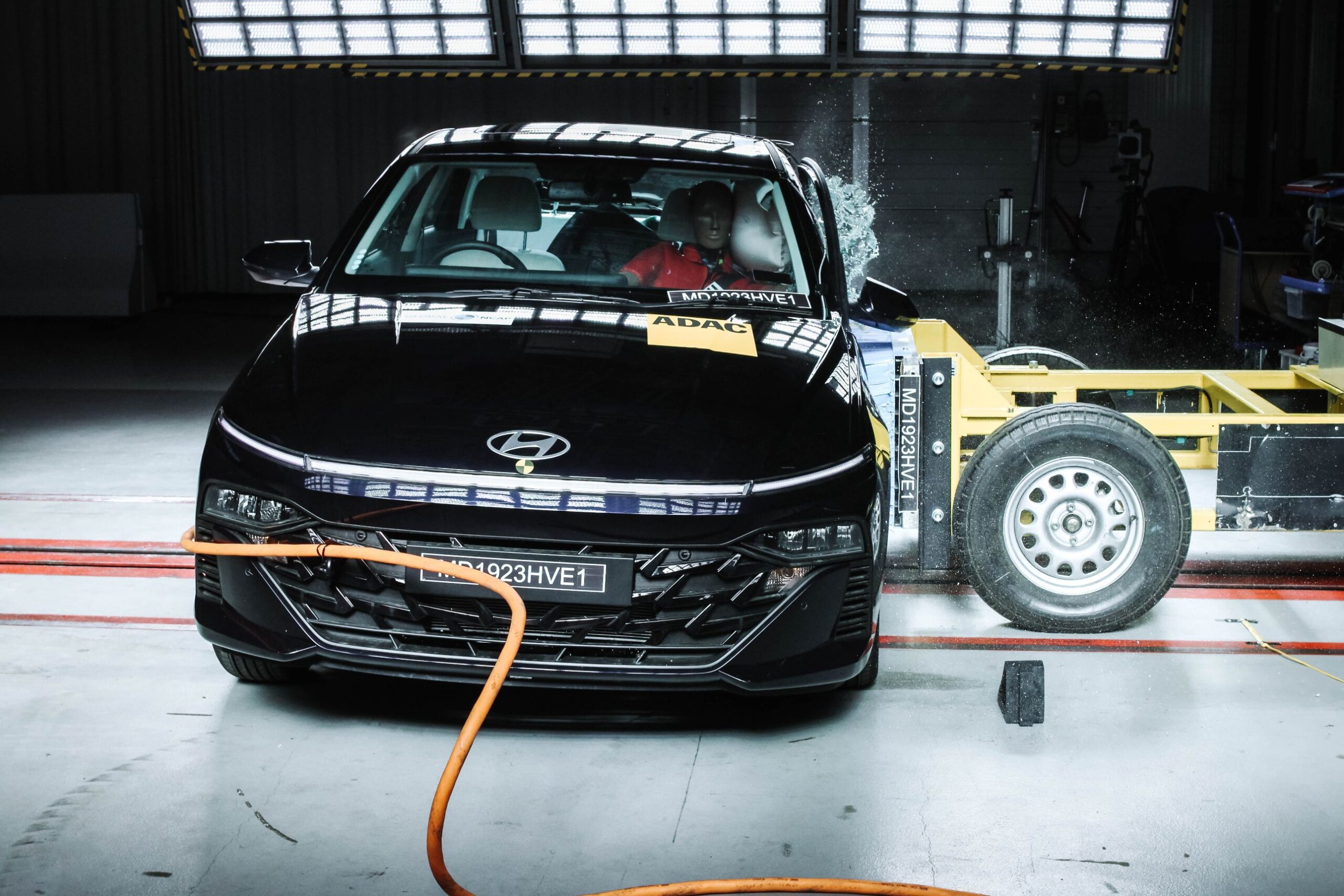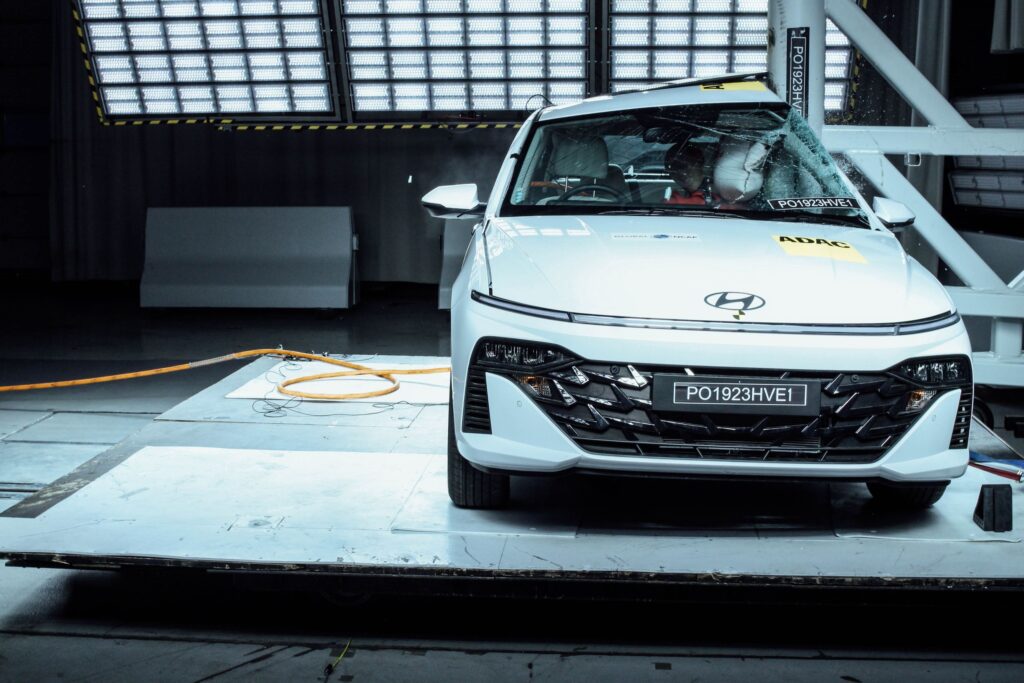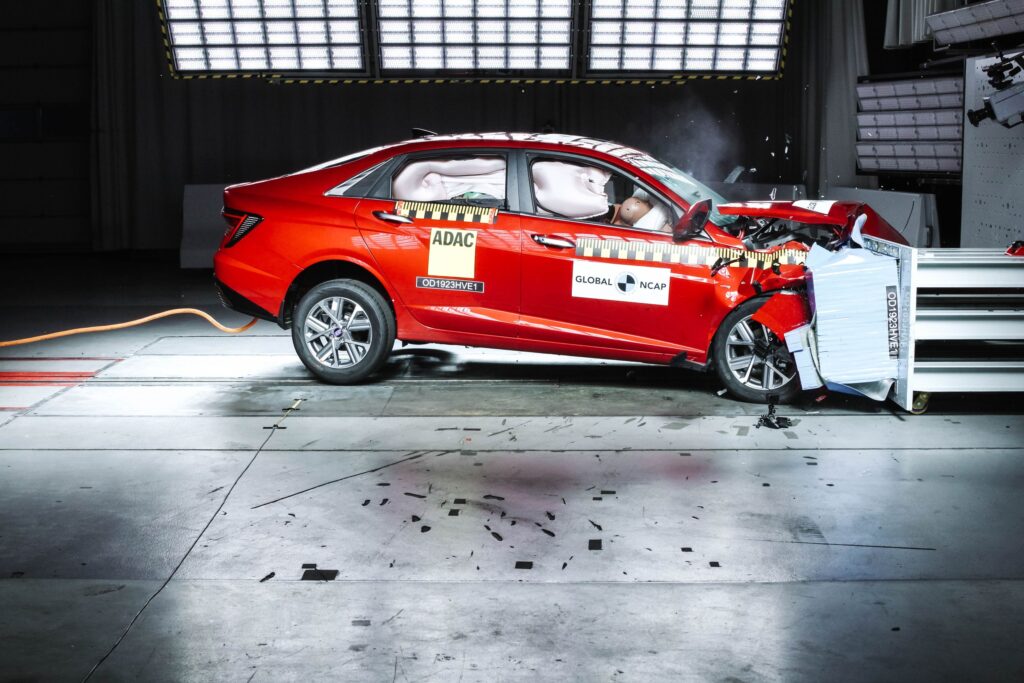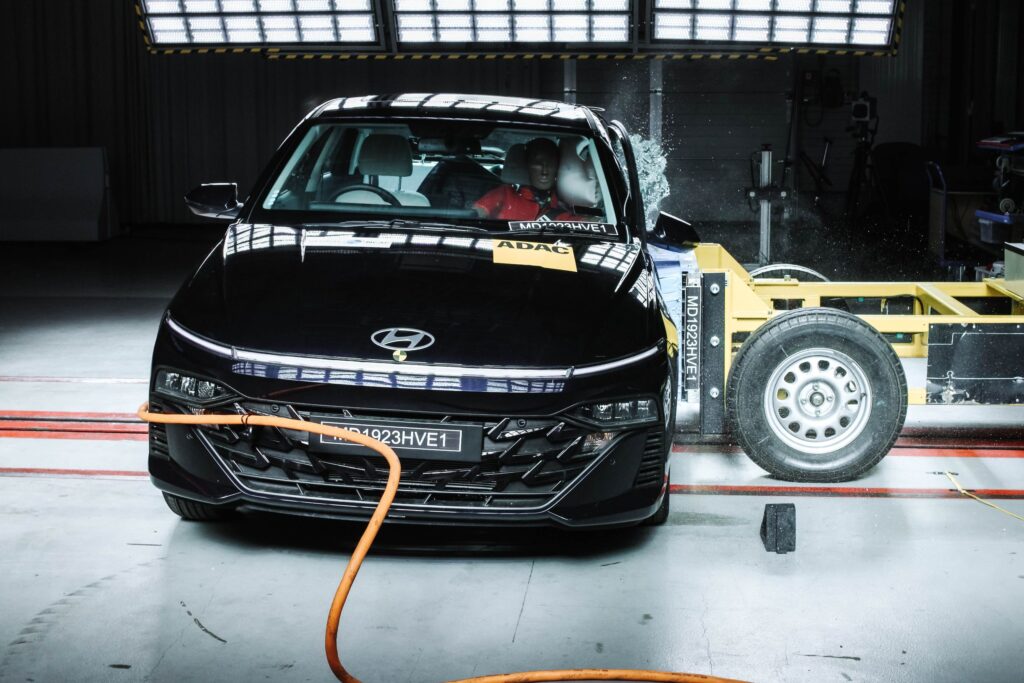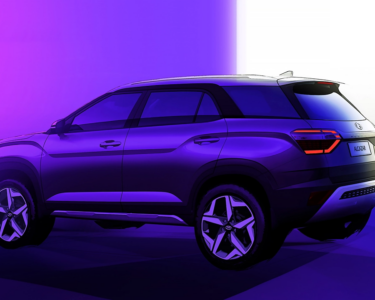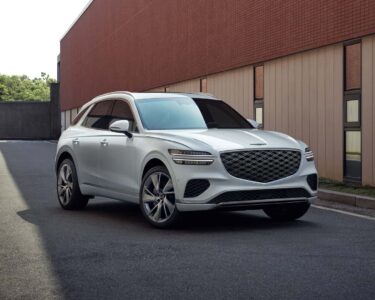The Hyundai Verna has emerged as a safety champion by securing a remarkable 5-star safety rating in the recent Global NCAP crash test conducted under the Safer Cars for India program. This achievement marks a significant milestone for Hyundai as it is the first vehicle from the automaker to receive the prestigious 5-star rating from Global NCAP. The tested model was manufactured in India, specifically for the Indian market, and it came equipped with a robust safety package, including 6 airbags, Electronic Stability Control (ESC), rear ISOFIX mounts, and seatbelt reminders for all seats, all provided as standard features.
It’s worth noting that the Hyundai Verna was among the last few cars to undergo testing under the Safer Cars for India program, as the responsibility for crash testing vehicles intended for the Indian market has now transitioned to Bharat NCAP, effective from October 1. In the Global NCAP assessment, the Hyundai Verna excelled in both adult and child occupant protection, garnering widespread praise. The vehicle achieved a commendable total score of 28.18 points out of a possible 34 in adult occupant protection. However, the test did raise concerns about the bodyshell’s stability, which was deemed unstable and not capable of withstanding further loadings. Nevertheless, the Verna offered good protection to the heads and necks of both the driver and the passengers during frontal impact testing, although the driver’s chest protection was rated as marginal. In contrast, passenger chest protection earned a good rating.
The knee areas of the driver and passenger provided marginal protection, as they could potentially be exposed to dangerous structures behind the fascia. Additionally, the footwell area received an unstable rating. In the side impact test, the Hyundai Verna excelled in safeguarding the head, pelvis, and abdomen, although chest protection was deemed adequate. Similarly, in the side pole impact test, it received an ‘OK’ rating, demonstrating good head and pelvis protection, marginal chest protection, and adequate abdomen protection.
The Verna’s inclusion of Electronic Stability Control (ESC) as a standard feature contributed to its favourable performance in this area, meeting Global NCAP’s requirements and complying with UN 127 and GTR9 pedestrian protection norms. In the child occupant protection segment, the Verna notched an impressive 42 out of 49 possible points. This score encompasses a perfect 12 out of 12 points for Child Restraint System (CRS) installation and a full 24 points in the dynamic score category. During testing, the Verna was subjected to crash scenarios with dummies representing an 18-month-old and a 3-year-old child, both in rear-facing seats. These seats were secured using i-size anchorages and a support leg, which effectively prevented head exposure during frontal crashes. The CRS also provided complete side impact protection.
While the Verna features 3-point seatbelts in all seating positions as standard, it does not offer the option to disengage the front passenger airbag when a rearward-facing CRS is installed in that position. An interesting observation during testing was a CRS failure after the side impact test. However, the CRS manufacturer attributed this to a one-off occurrence. To verify the claim, Global NCAP conducted a subsequent higher energy side impact test, which revealed no further signs of failure. In the midsize sedan segment, the Hyundai Verna joins the ranks of the Skoda Slavia and the Volkswagen Virtus, all of which boast 5-star safety ratings. However, the latter two models performed marginally better in adult occupant protection and exhibited stable body shell integrity.

